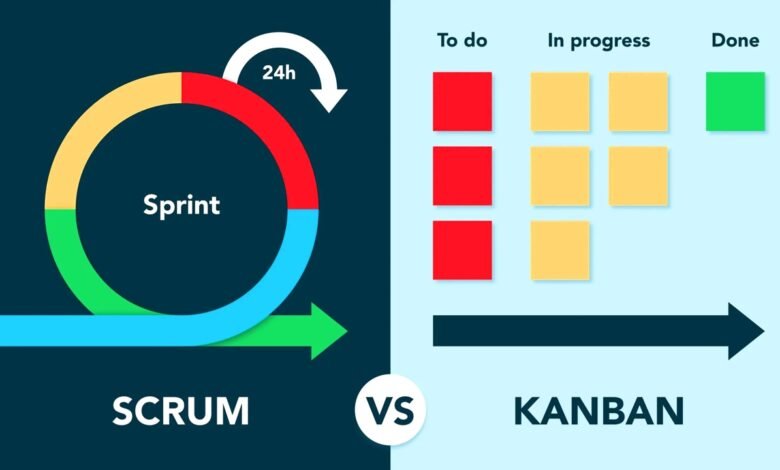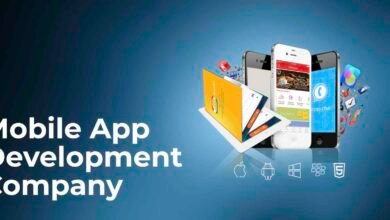
Software development arena is ever changing and selecting the right project management approach is critical for successful delivery and deployment. In 2024, Scrum and Kanban are two most sought-after agile development methods. Both development approaches feature advantages and meet the needs of projects. However, the big question is which one better fulfills today’s fast-paced development landscape.
In this article, we will discuss the key principles governing Scrum and Kanban, identify their advantages and limitations. Also check the circumstances where you can implement Scrum or Kanban the best to adapt to your development needs in 2024.
Read More: 17 Best Free Remote Access Software Tools (2024)
Kanban vs. Scrum
Both Scrum and Kanban Scrum forms part of Agile software development approach and focuses on optimizing workflows and improving productivity. To get a clear understanding of which methodology suits the best for the fast-paced development needs, we shall delve deep into both development approaches. Let’s go!
What is Scrum?
Scrum is popular among developers due to its structured methodology. It focuses on the iterative progress in fixed-length sprints. Typically, it is suitable for a development team that gives prime significance to continuous improvement via feedback loops.
While on the other hand, Kanban is relatively flexible, convenient for handling workflows. It pays attention to continuous delivery, but without the limitations of fixed sprints. Therefore, it is ideal for projects that feature changing priorities and are subject to continuous changes. Scrum facilitates effortless coordination between the team members particularly for complex projects. It focuses on iterative progress and emphasizes teamwork.
An Overview of Scrum Methodology
The team uses iterative processes and recurring sprints to verify the progress to adopt strategies to get optimized results. Generally, there are four main phases in iterative approach/Sprint. Let us list it down:
Sprint Planning
Team members engage in planning and decision making with respect to the objectives for the next iteration or upcoming sprint.
Stand up
The meetings that take place during the iteration phase to follow up on the recent updates. It keeps track of the development process and ensures that every task is aligned and the team working toward the one common goal.
Sprint Demo
Compared to stand-up sprint demo is a lengthy discussion in which the finished products’ features are presented and reviewed.
Sprint Retrospective
Typically a review where the analysis of the aspects that went well, the areas of improvement and mapping out the steps to make the next sprint/iteration better.
Fundamentally, all these phases ensure that every single member in the team rows in the same direction and have a clear idea on the responsibilities at every step as the development progresses.
When should you use Scrum methodology?
As mentioned above, scrum methodology is ideal when you think that your project needs continuous streamlining. Organizations offering software development services UK and globally make use of Scrum methodology when they require comprehensive streamlining starting from ideation to implementation.
What are the responsibilities and roles in Scrum?
The Scrum development approach revolves around three key responsibilities.
Product owner
Responsible for defining the list of tasks and achieving it during the specified time.
Scrum master
Assists the development and product team for achieving the results in accordance with the rules and policies essential for completing the project. It also removes any kind of obscurity.
Development team
works on a particular project and includes programmers, business analysts and testers.
What are the limitations in Scrum Methodology?
Scrum is an efficient agile methodology but there are some limitations that affect its efficiency. One thing is that you need to have thorough expertise and skills to use it. In fact, not just the Scrum master but the entire team members possess high skills to adopt the Scrum methodology.
Now that we have discussed the Scrum methodology, we shall look into the next popular approach in software development.ie Kanban. Let’s start with understanding Kanban.
What is Kanban?
Kanban, as aforementioned, is an agile software development approach giving due significance to continuous delivery. In Kanban, the work items are visually represented in Kanban board. As a result, team members can keep tabs on the progress every time. Compared to Scrum, Kanban helps teams to work together and helps them deliver quality products. The two most important components in Kanban include- cards and boards. With the help of the virtual board, the development team can get access to the details from any location and make team coordination possible.
The second component is cards where each card represents a specific task such as, what should be implemented down the line. Further, it ensures that every team member is aligned to the specified goal.
When should you use Kanban?
When the project needs continuous improvement and gradual increments. The Kanban board assists the team and helps plan the entire project to make certain that the tasks assigned are finished as specified.
What are the fundamental principles in Kanban methodology?
Workflow visualization-helps with the complete understanding of the present workflow and how the tasks are progressing during the entire development process.
Limiting work in progress
This principle aims at controlling the amount of work in progress to prevent team members burdened with several tasks. It also improves focus and workflow, The key advantages include faster cycle time, improved productivity and product quality, reduced lead times and enhanced morale of team members.
Workflow management
One of the major benefits is that the Kanban approach helps manage the workflow easily and helps the team members to do the tasks quickly.
Communicating Process Policies
Every team member should have a clear understanding of the rules, regulations and policies. Indeed, it enables the team members to work closely with absolute coordination.
Feedback loops
a very pivotal part of Kanban approach, its daily stand-up meeting serves as a great way to achieve team harmony with respect to work completed and those to be done today.
Continuous Improvement
Kanban focuses on shared vision for better implementation and to prevent concerns. It helps with continuous evaluation and improvement. Further, being aware of the workflow and processes, there is every chance for improvement.
Read More: Top Software Application Development Services in UK
What are the common challenges faced while adopting Kanban methodology?
Kanban is simple and easy to use in contrast to Scrum, but there are certain aspects that need to be taken care of such as using a complex board can impact the development process. Also, Kanban does not give predefined roles or responsibilities. The responsibility lies with none with respect to the stages in project development or performance of the members.
How do you select between Kanban and Scrum?
In the agile software development process, for selecting between Scrum and Kanban, we should look into several aspects such as the type of organization and the teams have to identify the ideal one that offers fast delivery, improves productivity and reduces inefficiencies. Or if you are baffled, try with both the methods and analyse the advantages received and the issues faced in both cases.
You can go with Scrum methodology if your team deals with improving feature development feedback. On the contrary, if your team works on maintenance aspects, then you have to consider Kanban. Indeed, the project needs are not always the same and depending on the approaches you select should achieve the project goals.
Author bio:
Silpa Sasidharan is a content writer and social media copywriting expert working at ThinkPalm Technologies who aspires to create marketing texts for topics spanning from technology to automation and digital business solutions.











